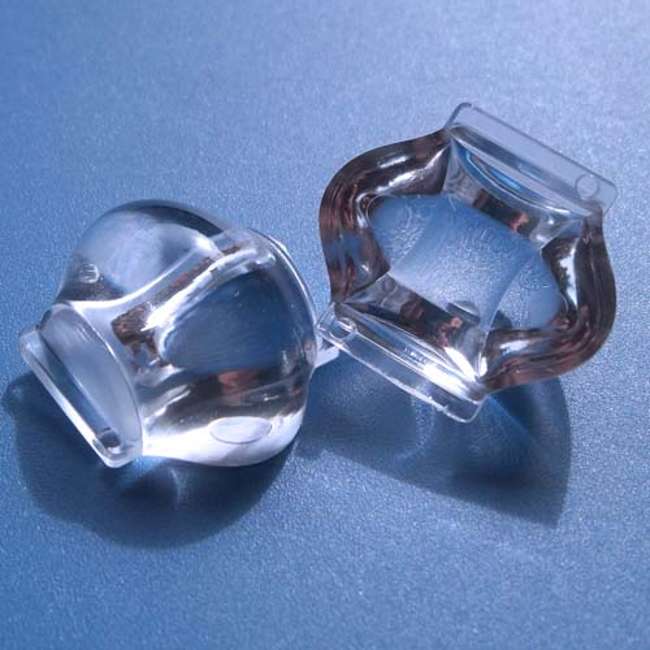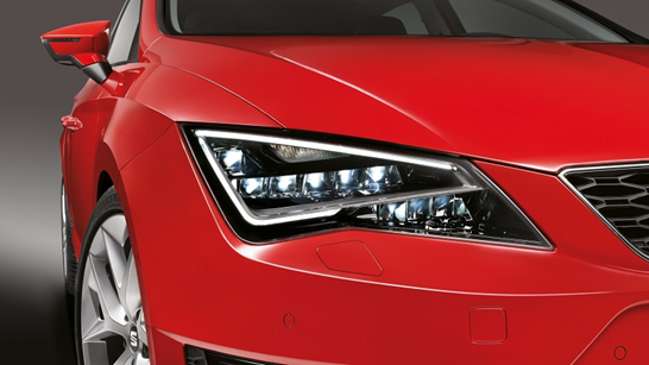With the advent of "white" super-bright light-emitting diodes (LEDs), a revolution in lighting technology has occurred. High energy efficiency, colossal service life, low ripple coefficient allowed LEDs to significantly press out traditional light sources in the lighting market. However, the lighting technical features of LED made it necessary to apply new approaches in the design of light sources.
In luminaires with traditional light sources, reflectors (reflectors) are most often used to form the directional pattern of the light flux. In LED luminaires, lenses for LEDs are mainly used for this purpose.
Appointment
The luminous intensity curve (LSI) displays the spatial distribution of the luminous flux. For different applications, luminaires must have their own type of luminous intensity curve. The main KCCs are shown in the figure.
LEDs, unlike other light sources, such as fluorescent lamps, have a fairly small physical size. Therefore, even at short distances, they can be considered point sources. In addition, LEDs are characterized by a small scattering angle of the luminous flux, less than 120 °. Therefore, without technical tweaks, it is rather difficult to obtain the required luminous intensity curve using LEDs.
For different tasks, engineers find different technical solutions. For example, in LED lamps, the spatial arrangement of LEDs and frosted bulbs are used to obtain the required luminous intensity curve. Ceiling luminaires use prismatic or matt polycarbonate diffusers.
More sophisticated devices such as street lights, floodlights, portable lights, automotive LED optics use lenses for LEDs or lenses in combination with reflectors. All these and other optical devices are classified by specialists as "secondary optics".
How lenses work
It is known from physics that at the interface between two media with different optical density, light rays are refracted. By creating different shapes of lenses, it is possible to obtain the refraction of the light flux in different directions.
For example, biconvex collimator lenses are often used to form a narrow light beam in flashlights. With their help, it is possible to obtain a symmetrical light beam with a scattering angle of only 10 about. By varying the distance from the LED to the lens, the angle of the light beam can be changed within certain limits.
In some devices, it is required to obtain rather complex KCC in various planes. It is possible to obtain a given SSC by changing the shape of the lens or by applying a microrelief in the form of wedge stripes on its surface.

For example, to illuminate roads or other extended objects, it is required to obtain an "oval" CSC in the horizontal plane. To obtain such a luminous intensity curve, lenses must have a rather complex shape.
Some manufacturers produce LEDs along with secondary optics. An example is OSRAM Opto Semiconductors' Golden Dragon Oval Plus series of LEDs designed specifically for street lighting fixtures. LEDs of this series are supplied with a lens that forms an "oval" luminous flux diagram. This technical solution greatly simplifies both the design and manufacture of luminaires.
Materials for manufacturing and methods of fastening
Most manufacturers use clear polycarbonate for the production of lenses. This material has excellent optical properties. Due to the low losses due to internal absorption and reflection of light, the efficiency of optical systems based on polycarbonate is 90% or more.
The material works well in a wide temperature range, is not subject to rapid aging, is lightweight, and has sufficient strength. An important advantage of polycarbonate over other materials is its manufacturability, which makes it possible to produce cheap and high-quality lenses on an industrial scale.
Of course, traditional glass is also used for LED lenses. Most often borosilicate varieties. Glass lenses are harder and therefore more scratch resistant.
Depending on the type of housing, the lenses can be held on the LED by friction (yes, yes, it is friction - there is such a technology), attached using special accessories, or glued to LED radiators or printed circuit boards. For example, 5450 LEDs with clip lenses are often used for decorative lighting. At the same time, it is held on the LED by the force of friction.
LEDs with lenses for cars
Many automakers, developing new car models, are actively switching to LED lighting technology. This approach is fully justified. After all, a 10-watt LED headlight will shine like a 100-watt one. Naturally, along with the use of LEDs, the secondary optics of cars also changed. The LEDs in the headlights are used in conjunction with specially designed lenses that create light intensity curves that meet all road traffic regulations.

Unfortunately, it is very difficult to install LEDs in the headlights of old cars instead of incandescent bulbs. However, manufacturers are finding a way out. On the market you can find LED car lamps for low beam. Even more suggestions for tuning lovers. There are a variety of LED headlights on sale with lenses that can be fitted to the grille or bumper. The already mentioned combination of LED 5450 with clip lenses is often used for decorative illumination of various elements of a car.
DIY lens making
Making an LED lens with your own hands is not an easy task. The easiest way is to remake it from another device, such as a magnifying glass. The author of the video tells how to do this.
Output
In the above examples and in many other cases, the use of lenses for LEDs allows you to fully realize all the positive qualities of LED. To form the luminous intensity curve necessary for this type of luminaire, to fully use the luminous flux, to significantly reduce the costs in the production of lighting devices.



